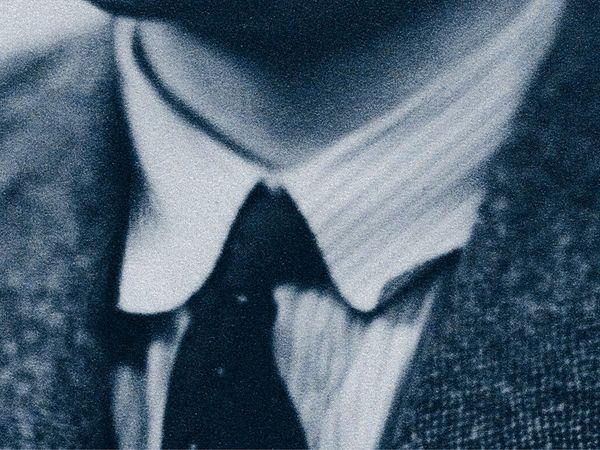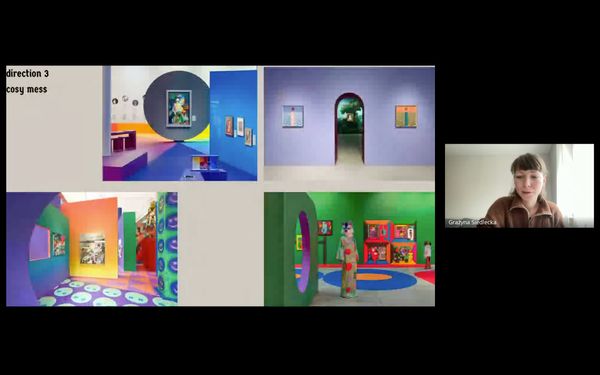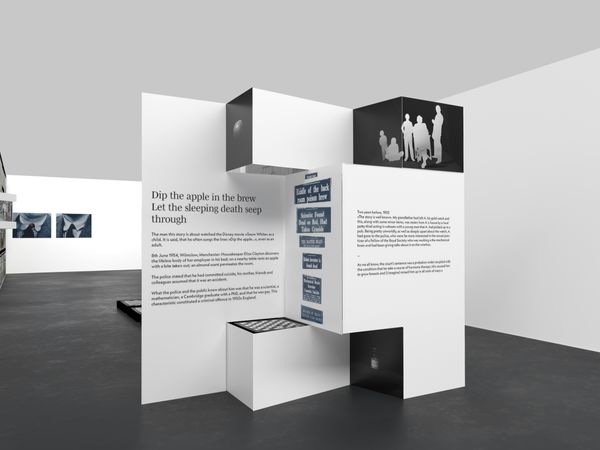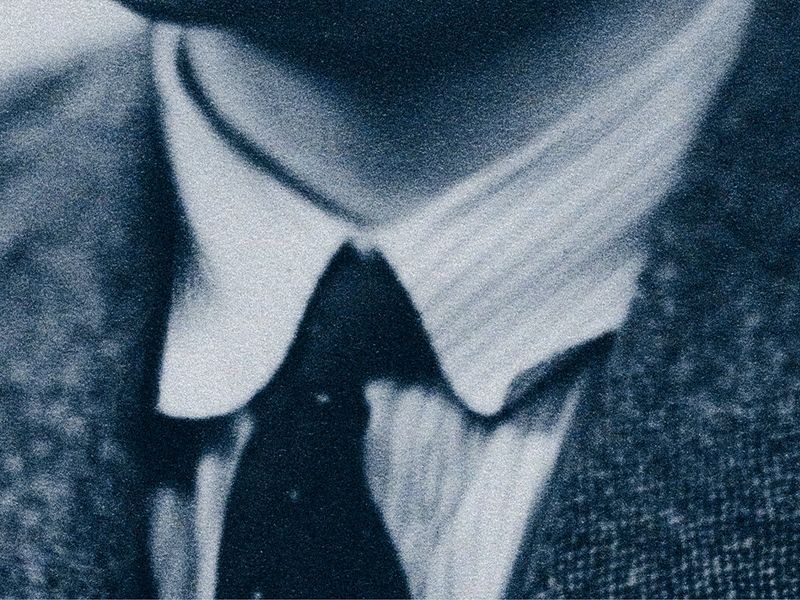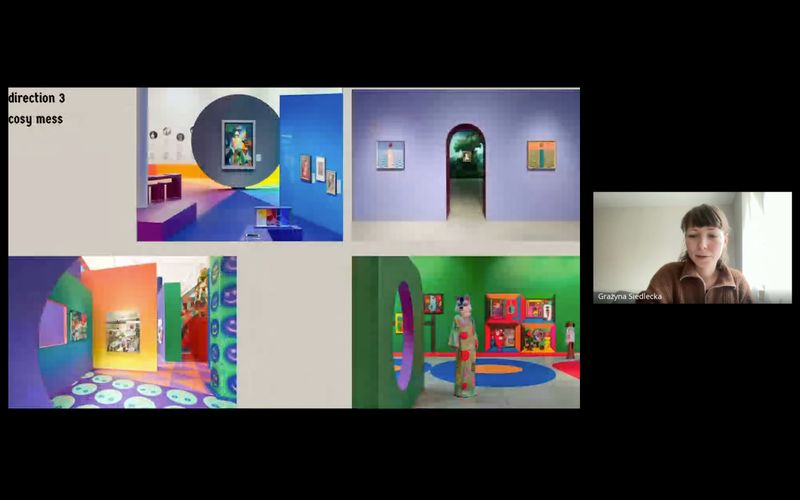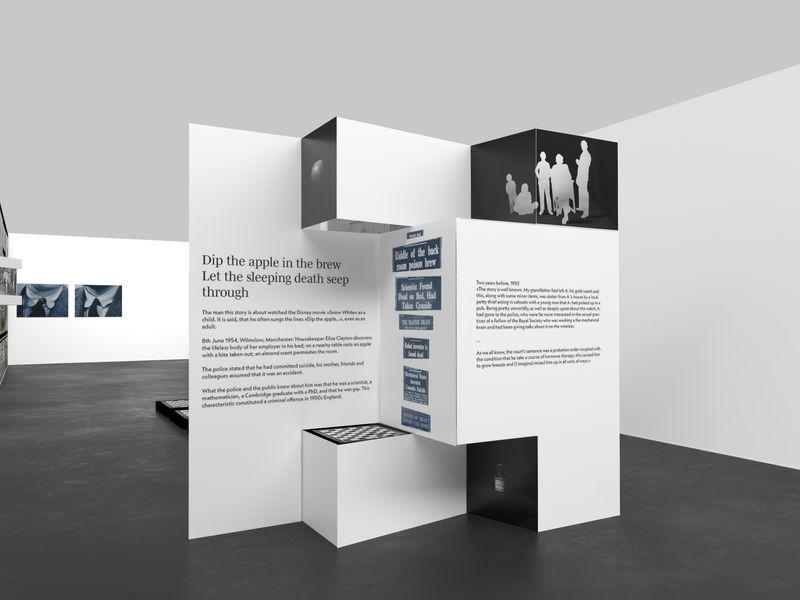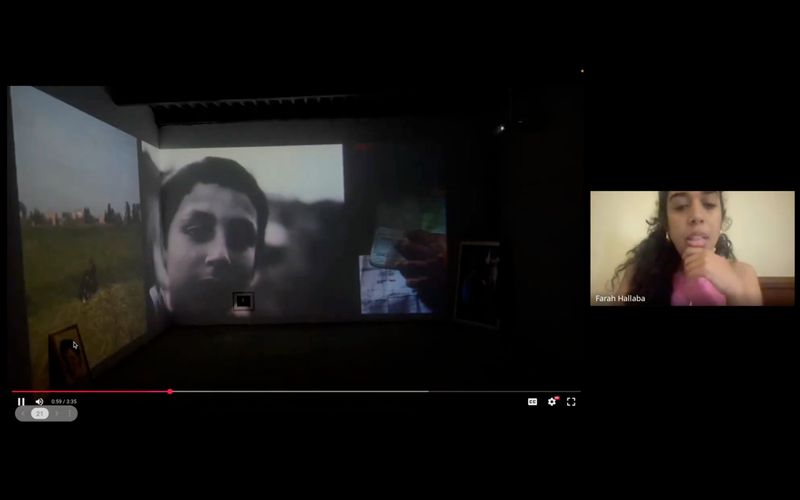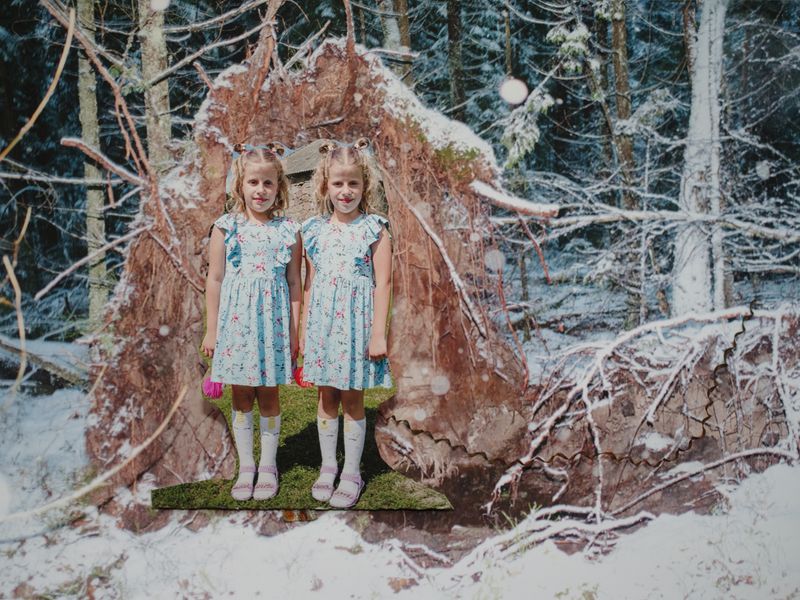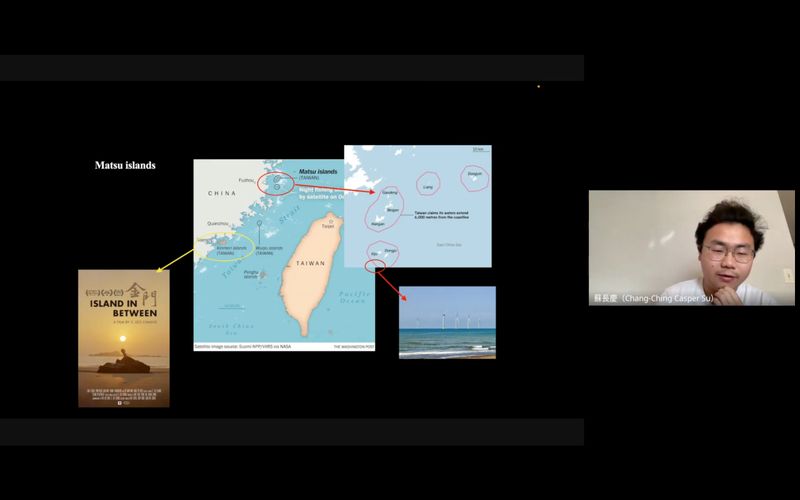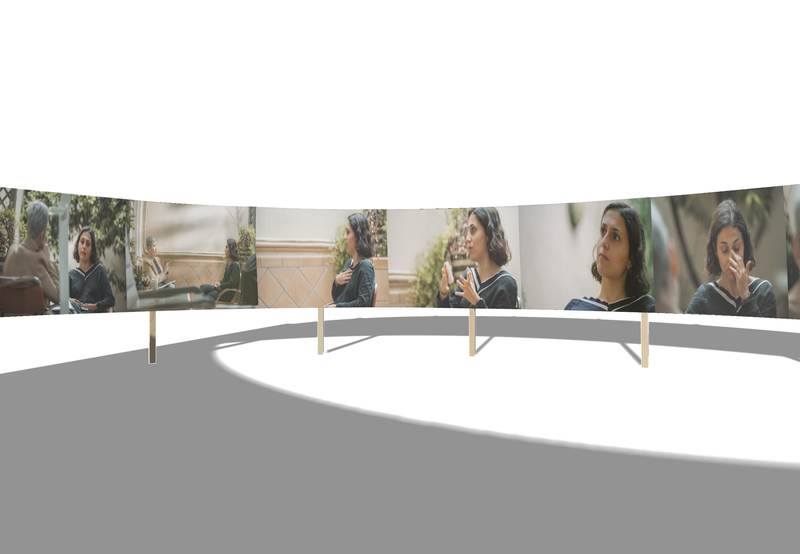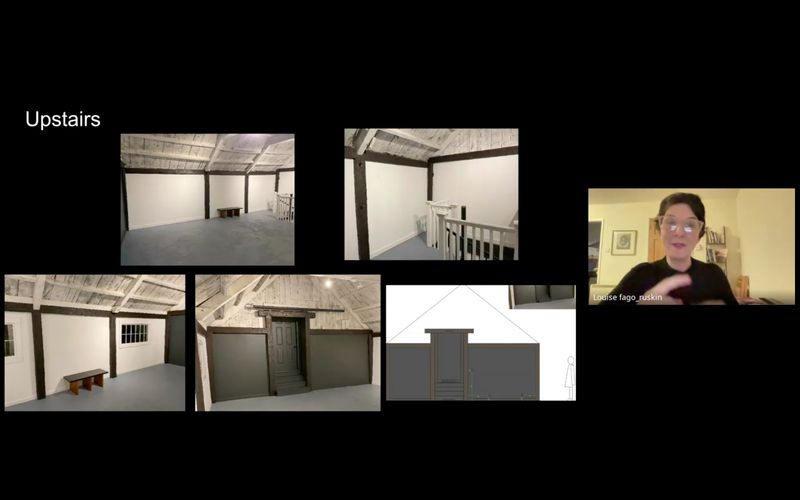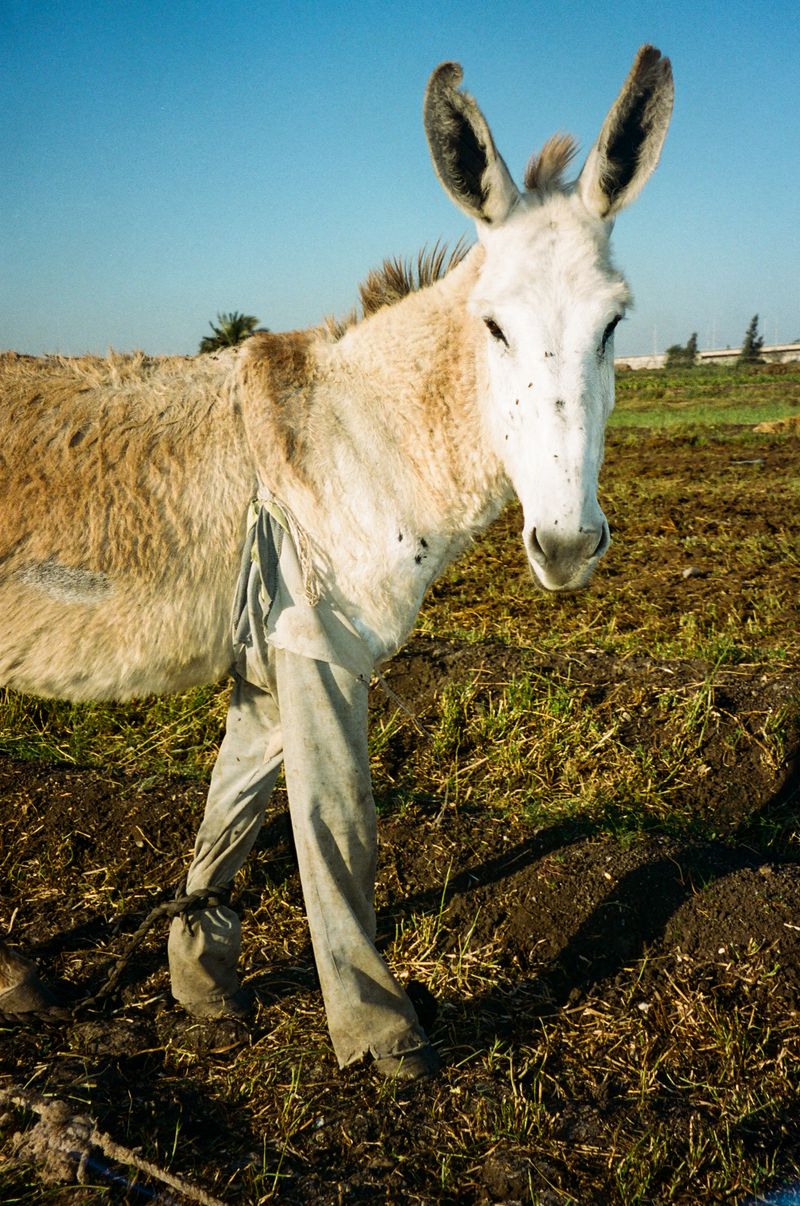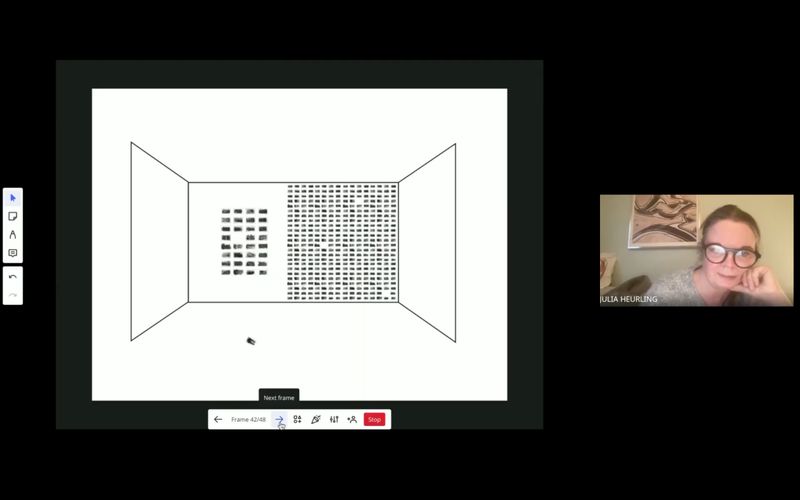CURAE 2024/25 Alumni Reflect On The Curatorial Practice Online Masterclass
-
Published12 May 2025
-
Author
While applications are open for the 4th edition, participants from CURAE 2024/25 speak of the Masterclass as a space to shape their curatorial philosophies which have context, power, and narrative at their core.
Exploring research, planning, and curatorial methods, the CURAE Online Masterclass on Curatorial Practice provides participants with the necessary tools to produce a photography exhibition. The upcoming edition, running from October to May 2026, will be led by Dutch artist and curator Erik Kessels for the 3rd time.
With enrollment open until 5 June, we touched base with Grażyna Siedlecka, Marcel Rauschkolb, Sera Galea, María Camila Vargas, Katerina Kouzmitcheva, Chang-Ching “Casper” Su, and Louise Fago-Ruskin to discuss their learning process, which helped bringing curatorial visions into shape and practically grounding their practice.
You can deepen in their projects by joining CURAE's year-end live presentation this Wednesday, 14 May at 3pm CEST.
Can you give us a glimpse of the curatorial project you have been developing during CURAE?
Grażyna Siedlecka: I’m working on a Low Expectations idea - a multilayered curatorial project that uses humor as a critical lens to examine the hierarchies and absurdities of the contemporary art photography world.
Marcel Rauschkolb: During this masterclass, I began working on a project about the life of the British mathematician Alan Turing. My interest in Alan Turing’s life and work and my desire to make this visible to others motivated me to develop new ways of constructing and presenting works. As a result, I transitioned from hanging images on the wall to a more three-dimensional, sculptural approach. This doesn’t need to be obsessive; not everything must become an object. Ultimately, a good mix will make it enjoyable.
Sera Galea: My project is called Where Thorns Lie. In this proposal, I take on the role of both artist and curator. This project invites viewers into a rarely seen space — not just the physical setting of a private back garden, but the interior terrain of vulnerability, reflection, and personal truth. The work presents a profound documentation of a therapy session held in my back garden — a space symbolically and literally hidden from public view. In the presence of a therapist, I entered this space not only literally but also metaphorically — stepping into the back garden as an act of going inward, facing and documenting what is often left hidden, while facing both the good and the difficult. Known for keeping others at the threshold — in the metaphorical and literal 'front garden' — this piece marks a deliberate act of openness. This is not a performance of healing, but a trace of it. A private moment made public not for spectacle, but for communion — for witnessing.
María Camila Vargas: An exhibition where intuition and structure collide, and meaning hovers on the edge of nonsense. The artists work in the in-between—stretching the margins of artistic language, embracing contradiction, and resisting fixed categories. Found materials, gestures, and sensorial disruptions create a playful, fluid landscape where things "kind of make sense" but never fully resolve, inviting instinctive connections and making the familiar strange.
Katerina Kouzmitcheva: My project, How To Eat At Night, explores the psychological and cultural dissonance of growing up in a totalitarian regime. I use photography to peel back layers of illusion—constructed fairy tales, state narratives, and inherited silence. Through a dreamlike visual language, I explore how truth becomes fragmented, how memory is reshaped, and how desire—for freedom, for clarity—emerges like hunger in the night.
Chang-Ching “Casper” Su: During CURAE, I expanded my long-term research project The Sky Is Green, The Tears Are Blue into a curatorial inquiry. The project began with an investigation of the eerie green light cast by Chinese squid fishing vessels in the Taiwan Strait—a space both ecologically fragile and geopolitically fraught. Through image, sound, and written word, I explored how artificial light becomes both evidence and agent of political desire, how sovereignty is expressed not only through borders, but through the air, the sea, and even the night sky. CURAE offered a space to reframe this as a shared curatorial gesture: how can we hold space for entangled meanings— ecological, emotional, colonial—through exhibition-making?
How did the Masterclass contribute to the development of your own voice, particularly in articulating your vision and presenting your work?
Sera Galea: The Masterclass provided me with the space and encouragement to explore within, allowing me to uncover parts of my practice that were previously evolving. Through Erik’s guidance, I found the courage to explore my family archive and critically examine its influence and relevance within my own practice. This process of reflection deepened both my personal and artistic understanding of my core values, profoundly strengthening the development of my work and the way I present it.
Marcel Rauschkolb: The masterclass taught me to rethink my work and intent at every project stage and to occasionally step into the role of a visitor to make the story comprehensive and engaging for the viewer.
Louise Fago-Ruskin: I have found the Masterclass extremely helpful as I continue to develop work for an upcoming solo show and submit responses to call outs. Whilst I have not been able to attend all sessions, I have been grateful for the recorded sessions to be able to catch up. Being able to observe other practitioners and their ways of working has been both stimulating and invaluable. One-To-One tutorials with Erik have been a highlight and helped with key ideas and curatorial decision-making processes.
Grażyna Siedlecka: It allowed me to clarify my vision and helped me to find my own voice.
Katerina Kouzmitcheva: The Masterclass helped me ground my practice in structure. It pushed me not only to create intuitively but also to shape and present my photo series with clarity and intention. Articulating the themes of illusion, memory, and political mythology gave me a stronger voice—one that connects my personal experience to a broader historical context. It also helped me find the right visual form, highlight the narrative thread, and clarify the underlying intent of the work.
María Camila Vargas: It pushed me out of my comfort zone, made me sit with the uncomfortableness of “not knowing,” and move forward despite the uncertainty. It made me more explorative.
Chang-Ching “Casper” Su: The Masterclass helped me translate intuition into language. I’ve always worked from a place of visual and material research, like photographs, objects, and atmospheres, but Erik’s sessions challenged me to make my ideas graspable to others without simplifying them. It pushed me to think of curatorial language not just as explanation, but as choreograph - guiding people through the logic of a space, a work, or a rupture.
Following your participation in CURAE, have you noticed any shifts in your curatorial philosophy?
Chang-Ching “Casper” Su: Absolutely. I used to think curating was about context-building, and now I feel it’s more about negotiating tension. The tension between care and confrontation, opacity and clarity, power and vulnerability. My curatorial approach is now more porous. I’m less interested in control, more in proximity: between works, viewers, and the histories that haunt both.
Grażyna Siedlecka: Yes, I am more determined to find my own voice, and believe more in my creative uniqueness (as each creative person is unique in how they perceive and communicate with the world).
Katerina Kouzmitcheva: Yes. I’ve come to understand curation as an act of storytelling—an active engagement with context, power, and narrative. It’s not only about selecting works, but about creating space for questioning, for rupture, for unease. My philosophy has shifted toward embracing ambiguity and curating spaces where viewers confront discomfort rather than resolve it.
María Camila Vargas: Somewhat. I let things flow more. I’ve learned not to stay married to the initial idea—concepts can evolve.
Louise Fago-Ruskin: For me, I have gained increased confidence in my decision-making processes and been reminded that I can trust the quality of my work and my plans for the upcoming solo show. Working as a lecturer in contemporary fine art means I am fortunate to immerse myself in exciting ways to curate students’ work, but a deeper engagement with Erik has enriched my thoughts and plans.
Marcel Rauschkolb: Yes, I think so. Erik's and the peer's feedback, together with Erik's examples and the Studio Visits, helped me think of other, new ways of visualising my ideas in an exhibition space. This will also help me work with other artists as a curator in the future.
Sera Galea: The Masterclass shifted my perspective inward as a point of departure. I have developed a strong interest in articulating and highlighting work that holds personal significance, recognising the value of emotional and autobiographical resonance in my curatorial practice.
What about Erik's teaching approach resonated with you most?
Sera Galea: Erik’s teaching approach is refreshing — transparent, consistent, and genuine. His feedback during One-To-One sessions, group meetings, and even through phone calls and emails was instrumental in shaping my work. I’m grateful for his support and availability throughout the process.
Marcel Rauschkolb: Erik provides many insights into his projects, which are »behind-the-scenes« information. Examining sketches and early layouts combined with views of the final presentation is very helpful while working on a project. I also appreciated that he offers hints and references from other disciplines, such as literature, for your project.
María Camila Vargas: The way he thinks—his intuitive, flexible approach and his openness to contradiction.
Katerina Kouzmitcheva: Erik has a way of cutting through to the core of an idea. His questions are both rigorous and generous, challenging you to go deeper without prescribing a path. His sense of humor and direct, honest feedback made the process not only intellectually engaging but also refreshingly grounded.
Grażyna Siedlecka: His philosophy of being brave and not being afraid of bold ideas.
Chang-Ching “Casper” Su: Erik teaches with fearless clarity. He doesn’t shy away from difficult questions—instead, he meets them with honesty and invites you to do the same. Like a seasoned navigator, he moves through the complexities of curatorial practice with precision, care, and deep conviction. What struck me most was his ability to hold weighty ideas with a rare lightness—never simplifying, but always making space for nuance. He creates a learning environment where uncertainty isn’t a weakness, but a place to begin.
Louise Fago-Ruskin: I have been struck by the necessity of ‘the hook’ into an exhibition and the need to guard against diluting a show by the inclusion of too many conceptual ideas. Focusing on the ‘shoe’ and its inherent complex connotations has sharpened the exhibition plans and made the work more powerful as a result.
How did CURAE contribute to your educational path and shape your perspective as an artist and curator?
Katerina Kouzmitcheva: CURAE gave me the structure to reflect, articulate, and expand. It blurred the lines between artist and curator, encouraging a practice that is hybrid, research-driven, and emotionally precise. It shaped my understanding of curation not just as display, but as discourse and dialogue.
Louise Fago-Ruskin: As mentioned, I have felt a growing confidence in my practice which, in turn, has provided energetic motivation and a belief in my aims, ideas and outputs as an artist. I feel I am moving deeper into a sense of agency and honouring of the subject matter that I am addressing.
Grażyna Siedlecka: I feel like I learned a lot and gained some confidence with pitching my ideas to international institutions.
Marcel Rauschkolb: Group sessions, One-To-One sessions, and Studio Visits gave me many insights into others' curatorial practices and made me consider new approaches to presenting my own and others' work.
Sera Galea: CURAE expanded my understanding of the global art world and connected me with an inspiring network of peers. Their different perspectives and practices helped broaden my vision and approach to both creating and curating work.
María Camila Vargas: It helped reconnect me with my curatorial practice, reminded me of the value of process over outcome, and allowed me to explore more intuitively.
Chang-Ching “Casper” Su: It reminded me that I can inhabit both roles at once. I’ve always felt split between making and thinking, between intimacy and discourse, but CURAE affirmed the fluidity of this dual identity. As an artist-curator, I now see exhibition as a medium itself, capable of holding contradiction, affect, and criticality in equal weight.
What impression do you now have of online education? What was it like to have the chance to interact with peers based in different parts of the world?
Grażyna Siedlecka: I enjoyed this format, it allowed us to really connect without leaving our own town with people from different continents. We also stayed in touch on a WhatsApp group, and it made us know each other a bit more. But I would appreciate one real meeting in person at the beginning or the end of the course.
Marcel Rauschkolb: This wasn't my first online masterclass, and I always find it rewarding to see the work of other peers and artists from around the world. One of the advantages of online education is the ease with which we can access and share this work. Of course, attending an in-person meeting or course has its own unique appeal. Ultimately, it's not black and white; both formats complement each other.
Katerina Kouzmitcheva: Online education showed me how meaningful and engaging it could be. It was incredibly enriching to share experiences, challenges, and ideas with peers from such diverse cultural and geographic backgrounds.
Chang-Ching “Casper” Su: I believe the world after COVID has shifted how we understand education—not just in format, but in mindset. Online learning is no longer a compromise; it’s become a space with its own kind of intimacy and potential. At first, I was skeptical. But there was something unexpectedly grounding about meeting across time zones, exchanging thoughts about time-based art in real time, yet from entirely different geographies. Those conversations felt anchored in a shared urgency, despite our distance. It challenged me to rethink locality—not as a fixed place, but as a constellation of perspectives.
María Camila Vargas: I enjoyed it. I do wish there had been more group exchange. Erik’s input was great, but I wanted to hear more from the others, too—it felt a bit one-directional at times.
Sera Galea: Although I sometimes wished for the opportunity to meet and engage with my peers in person, online education through CURAE offered a good alternative. It allowed me to connect with individuals from different cultural and artistic backgrounds. Consequently, the diverse exchange of perspectives enriched my learning experience.
Louise Fago-Ruskin: As mentioned, I have felt a growing confidence in my practice which, in turn, has provided energetic motivation and a belief in my aims, ideas and outputs as an artist. I feel I am moving deeper into a sense of agency and honouring of the subject matter that I am addressing.
If you were to mention one Studio Visit that stuck to your mind, which one would it be and why?
Sera Galea: While all Studio Visits were extremely fruitful and interesting, the Studio Visit with Amak Mahmoodian stayed with me the most. I value the deep vulnerability in her work and the authentic way she shared her process with us. I was especially moved by her project One Hundred And Twenty Minutes, where she worked with individuals living in exile in the UK to explore dreams, memory, and belonging through different media. I appreciated her openness in discussing both her creative process and the emotional landscapes she navigates. It reinforced the importance of staying rooted in one’s truth when creating and presenting work — a lesson I will certainly carry with me into my practice.
María Camila Vargas: Tanvi Mishra and Claudia Kussel—I'm really interested in the topics they work with and the way they think through photography and narrative.
Chang-Ching “Casper” Su: The session with Francesco Zanot really stayed with me. He spoke about photography not as a static image, but as a thinking structure, a system of interpretation, projection, and delay. What resonated most was his way of discussing the future of photography. In terms of new technology, but in terms of how we read and reread images, how meanings shift across time and context. It made me reflect on how photographs in my own work don’t just represent—they anticipate, haunt, and sometimes mislead. His presence reminded me that photography’s strength lies not in what it captures, but in what it continues to unsettle.
Marcel Rauschkolb: If it's only one to mention, Francesco Zanot and his work and thoughts on curatorial practice. The others that impressed me were Jack Whitefield and Annegien van Doorn (sorry, to name three...).
Grażyna Siedlecka: I found the meeting with Tanvi Mishra incredibly inspiring.
Katerina Kouzmitcheva: It’s hard to choose just one Studio Visit—each one offered something unique and valuable. Some challenged my thinking, others resonated on a deeply personal level, and a few sparked entirely new directions in my work. What stayed with me most was the range of perspectives and the openness with which artists and curators shared their processes, doubts, and discoveries. Together, they formed a mosaic of insight that continues to influence my practice.
What advice do you have for prospective students preparing their applications?
Grażyna Siedlecka: Be brave, show your weirdest projects and ideas, show who you truly are in all your uniqueness!
Sera Galea: Apply — I’m so glad I did. CURAE offers invaluable time and space for personal and artistic growth. It equips you with the tools and insights needed to confidently present your work curatorially to prospective exhibition spaces and collaborators. When assembling your portfolio, prioritise including pieces that genuinely represent your practice. Don’t shy away from showcasing work that is still evolving or in progress; such work can also provide context to your process.
Marcel Rauschkolb: Be yourself, do not pretend. Take a close look at the professors and their work and see if it fits you and your expectations. It doesn't have to match perfectly. Often, somebody with a different approach and background can give you new ideas and help you move your work forward.
Katerina Kouzmitcheva: Be honest. Don’t try to fit into a curatorial mold. Let your questions—especially the unresolved ones—guide your application. CURAE isn’t looking for perfection, but for curiosity, depth, and a willingness to unlearn.
María Camila Vargas: Be honest. Don't try to impress—just show what you're genuinely curious about. I wasn’t sure I’d get in, but I’m really glad I applied.
Chang-Ching “Casper” Su: Be specific, but not rigid. Let your questions show. CURAE isn’t looking for a finished statement, it’s a place to complicate what you thought you knew. So lean into your contradictions. Propose something bold, even if it’s unresolved. Especially if it’s unresolved.
Louise Fago-Ruskin: I would suggest they go for it! I was extremely surprised to have been chosen to participate as there are so many fantastic artists out there – but one never knows what opportunity may emerge. So I would suggest they believe in themselves and their work and give themselves the opportunity for doors to open.
--------------
CURAE Online Masterclass On Curatorial Practice is part of PhMuseum's educational program, comprising five different masterclasses that will all share a single intake period running until 5 June, with classes beginning in October 2025. Each course is tailored to meet the needs of emerging photographers, artists, curators, and contemporary storytellers looking to bring their methods to the next level. Check out which program suits you best at phmuseum.com/education
--------------
Final deadline and participation fee
Before 5 June – If you apply by this date, you can join the program by paying the Regular Fee of €2,200. Since applications will be reviewed on a continuous basis, early submissions receive priority for seat allocation.
If you are offered a place, PhMuseum is happy to write you a supporting letter when you try to secure any external funding opportunities. In previous editions of our masterclasses program, the candidates' fees were covered thanks to the generous contribution of the IWMF Howard G. Buffett Fund for Women Journalists, Mondriaan Fonds, Arts Council Malta, and other programs. Read our guide to 2025 Education Funding for Visual Artists about opportunities that can help you secure funding.
